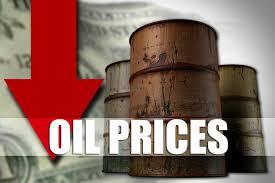
The spread of the coronavirus has affected oil and gas markets as investors are selling off their industry shares. But not all oil and gas companies are seeing a downturn.
On Friday, West Texas Intermediate crude futures plunged more than 6% before they recovered slightly.
Futures on WTI were down 4.6% to $44.92 at midday, a mark noted by analysts who pointed out the WTI hasn’t closed below $45 a barrel since 2018.
Brent crude futures also briefly fell below $50, to levels where Brent hasn’t closed since 2017. Brent is down more than 25% since the virus began making headlines in mid-January.
WTI finished the day down $1.80 at $45.29 for a loss of 3.82%. Brent crude was down 3.18% or $1.66 to finish at $50.52. Natural gas dropped 2.91% or 0.05 to end the day at $1.70 Mcf.
While oil has reportedly proven to be the among the weakest assets in the coronavirus selloff, the Friday closings also suggested otherwise for some companies.
For instance, Chesapeake Energy was up 0.015 at 0.275 for a change of 5.72%. Devon was up 0.57 at 16.24 – change 3.63%
Blueknight Energy Partners in Tulsa finished Friday up for the day. So did Alliance Resource, Continental Resources, Cypress Energy Partners, LSB Industries, Laredo Petroleum, Panhandle OIl and Gas, Unit Corporation, WPX Energy Inc. and Williams Cos.
Down for the day were Enable Midstream, Gulfport Energy Corp., Magellan Midstream Partners, Mammoth Energy Services, Matrix Service, NGL Energy Partners, OGE Energy, ONE Gas Inc. ONEOK and SandRidge Energy.
National companies with Oklahoma operations included ConocoPhillips which ended the day up 1.29 at 48.42 for a change of 2.73%; Energy Transfer LP was up 0.33 at 11.08 for a 3.06% change; EOG Resources finished up 3.26 at 63.26 which was a change of 5.43%; Marathon Oil Corp. ended up 0.35 at 8.27 for a 4.41% change; Phillips 66 was up 0.60 at 74.86 for a change of 0.80%.
“A lack of buyers and cancellation of contracts has prompted many companies to park their crude on very large crude carriers near Singapore,” according to S&P Global Platts, which just reduced its estimate for global growth in demand in 2020 to 860,000 barrels a day from its previous estimate of 1.33 million barrels. That would be the slowest growth since 2011.





